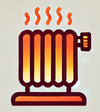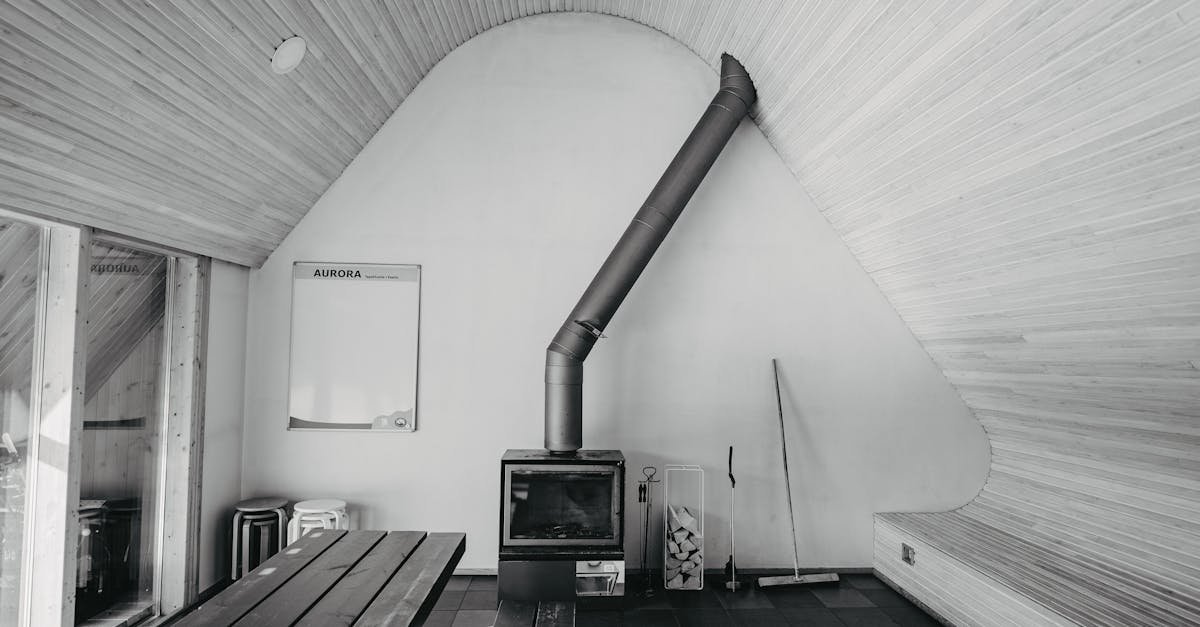When it comes to heater power consumption, electric heaters typically use more energy compared to gas heaters. Electric models can consume anywhere from 1,000 to 3,000 watts, while gas heaters generally operate at a lower energy cost due to their efficiency.
Understanding these differences is crucial for making an informed choice that fits your budget and heating needs. By comparing power consumption, you can save on energy bills while keeping your space warm and comfortable.
Overview of Heater Power Consumption
Heater power consumption varies widely among different types. Understanding these differences helps you choose the right heater for your space. Electric heaters use more energy, typically consuming between 1,000 to 3,000 watts. Gas heaters, in contrast, often operate at lower energy costs, providing a more efficient option.
The heating type significantly influences overall consumption. Infrared heaters excel in efficiency, converting 98-99% of energy into heat. They focus on heating objects and people directly, cutting down on heat loss. This approach results in immediate warmth.
Ceramic heaters follow closely, achieving 100% efficiency. They generate heat through ceramic plates and often use fans for better distribution. This design aids in rapid heating while minimizing energy waste.
Oil-filled radiators also feature 100% efficiency, converting electricity entirely into heat. These heaters retain heat well, providing warmth even after being turned off.
Evaluating these heater types helps you align your choice with your heating needs. Consider their power consumption and efficiency ratings to make an well-informed choice. This strategy promotes comfort while managing energy costs effectively.
Types of Heaters
Different heater types vary in efficiency and power consumption. Understanding these differences helps you make informed choices that fit your needs.
Electric Heaters
Electric heaters, like ceramic, convector, and oil-filled radiators, operate at high efficiency. They convert 100% of the electrical energy used into heat.
- Ceramic Heaters: These heaters use fans to distribute heat quickly. They typically run at 1,500 watts on high and 750 watts on low. They heat small spaces effectively and consume less energy.
- Convector Heaters: These systems heat the air within their casing. The warm air rises and circulates in the room, providing consistent warmth. They operate at similar wattage levels as ceramic heaters, offering a balance between power and efficiency.
- Oil-Filled Radiators: These units heat a fluid that stores warmth and releases it over time. They take longer to warm up but maintain a steady temperature, making them ideal for long-term heating solutions.
Gas Heaters
Gas heaters operate more efficiently than electric heaters. They use natural gas or propane, which generally costs less than electricity. You can notice significant savings in energy bills when using gas.
- Natural Gas Heaters: These heaters provide heat through combustion and are suitable for whole-home heating. They use less energy compared to electric options, making them popular choices in colder climates.
- Propane Heaters: These portable units work well in areas without natural gas lines. They offer versatility and can efficiently heat small areas or garages.
Infrared Heaters
Infrared heaters excel in efficiency. They convert 98-99% of energy directly into heat, warming objects and people instead of the air.
- Spot Heating: These heaters target specific areas, making them effective for localized heating. They reduce energy waste since they don’t warm up the entire space.
- Quick Warm-Up: Infrared heaters heat objects almost instantly. You feel the heat right away, providing immediate comfort without waiting for the room to reach a set temperature.
Factors Affecting Power Consumption
Understanding factors that influence power consumption helps you choose the right heater for your needs. Key aspects include heater efficiency ratings and the space you want to heat.
Heater Efficiency Ratings
Heater efficiency ratings indicate how much energy a heater converts into usable heat. Higher ratings mean less electricity wasted. For instance, infrared heaters achieve a 98-99% efficiency by heating objects instead of air. Ceramic heaters also boast high efficiency, using fans to spread warmth quickly. Oil-filled radiators harness 100% efficiency, retaining heat even after being turned off. When selecting a heater, check the efficiency ratings to ensure lower energy bills without sacrificing comfort.
Size and Insulation of Space
The size and insulation of your space significantly impact power consumption. A larger room requires more heating power, leading to higher electricity use. Conversely, well-insulated spaces retain heat efficiently, minimizing energy waste. For example, if your room measures 1,000 square feet, you might need a 1,500-watt heater. In contrast, a smaller, properly insulated room may only need a 1,200-watt heater to maintain warmth. Prioritize insulation and size when assessing your heating needs to optimize power consumption and enhance comfort.
Heater Power Consumption Comparison
Understanding heater power consumption helps you choose the best option for your needs. Different heaters operate at varying energy levels. This section compares electric and gas heaters and analyzes their costs.
Electric vs. Gas Heaters
Electric heaters typically consume more energy than gas heaters. Electric heaters use between 1,000 to 3,000 watts depending on the type and model. They convert electricity into heat efficiently. Infrared heaters and ceramic heaters achieve optimal performance, often utilizing nearly all their energy for heating.
Gas heaters, on the other hand, are generally more efficient. They provide heat at a lower energy cost. You’ll notice significant savings, especially for whole-home heating. Consider your heating requirements and monthly bills when deciding.
Cost Analysis of Different Heater Types
Heater operating costs vary based on type and efficiency. Here’s a comparison of common electric heaters:
| Heater Type | Efficiency (%) | Cost per Hour (kWh) |
|---|---|---|
| Infrared Heaters | 98-99 | 0.10 |
| Ceramic Heaters | 100 | 0.13 |
| Oil-Filled Radiators | 100 | Varies |
Infrared heaters heat quickly with low electric consumption. They excel in direct warmth to people and objects. Ceramic heaters also convert all electricity to heat. They often include fans for better air circulation.
By weighing the efficiency and costs associated with each type of heater, you can make an informed choice that balances comfort and energy expenses.
Environmental Impact of Heater Usage
Heater usage affects the environment in various ways. Electric heaters consume significant amounts of energy, leading to higher carbon emissions, especially if sourced from fossil fuels. Gas heaters, on the other hand, emit fewer greenhouse gases during operation. But, natural gas extraction and distribution can also harm the environment.
Heaters contribute to air quality issues. Electric heaters can increase demand on power plants, which may use coal or oil. This impacts local air quality. Gas heaters produce carbon monoxide and nitrogen oxides, which contribute to smog and respiratory problems.
Energy efficiency plays a key role in reducing environmental impacts. Infrared heaters provide immediate warmth. They convert up to 99% of energy into heat, reducing energy waste. In contrast, less efficient heaters can waste energy, leading to higher emissions. Choosing efficient options like infrared or ceramic heaters helps lower energy consumption and environmental damage.
Also, the lifespan of a heater influences its environmental footprint. Longer-lasting heaters reduce waste by minimizing replacements. Opting for durable, high-efficiency models lessens both waste and energy consumption.
Your choice of heater can directly impact the environment. Selecting energy-efficient models not only saves money now but also protects the planet for future generations. Understanding the complexities of heater usage empowers you to make informed, eco-friendly choices.
Conclusion
Understanding heater power consumption is crucial for making smart choices about your heating needs. By comparing electric and gas options you can find a balance between comfort and cost. Consider the efficiency of different heater types like infrared and ceramic heaters which offer impressive energy savings.
Factors such as room size and insulation also play a significant role in overall energy use. Opting for energy-efficient models not only helps reduce your monthly bills but also minimizes your environmental impact. With the right information you can select a heater that’s both effective and economical, ensuring warmth without very costly.








